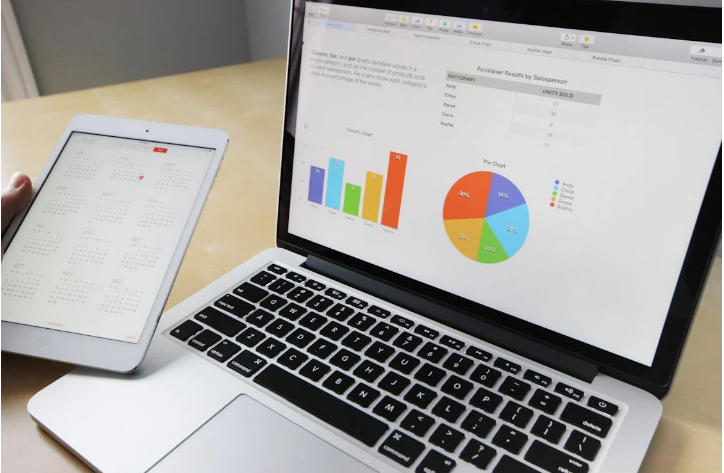
The data processing cycle is a systematic sequence of input, processing, storage, and output steps to convert raw data into meaningful information. It involves activities facilitated by computer systems, ultimately extracting insights for informed decision-making and operational efficiency. It is a vital process for businesses, organizations, and individuals who rely on data to make informed decisions.
The first step in the data processing cycle is input, where raw data is collected and entered into a computer system. The data is then processed, which involves sorting, analyzing, and transforming the data into a more useful format. Once the data has been processed, it is stored in a database or other storage system. Finally, the processed data is output in a format that can be easily understood and analyzed by the end-user.
Understanding the data processing cycle is essential for anyone who works with data, whether it be a data analyst, business owner, or researcher. By following the steps in the data processing cycle, individuals and organizations can ensure that they are making informed decisions based on accurate and relevant data.
Understanding the Data Processing Cycle
Definition and Importance
The data processing cycle is a systematic sequence of input, processing, storage, and output steps to convert raw data into meaningful information. It is a critical process that enables organizations to extract valuable insights from data, make informed decisions, and improve operational efficiency.
The cycle begins with the input of raw data, which is then processed using a suitable method to produce meaningful information. The output is stored for future use and can also be used as input for the next cycle. The cycle is iterative and is repeated every time data are updated or when a new analysis is required.
The importance of the data processing cycle lies in its ability to transform raw data into actionable insights. Without this process, data would be meaningless and unusable. The cycle enables organizations to make informed decisions, identify trends, and improve their operations.
Key Components
The data processing cycle consists of four key components: input, processing, storage, and output.
Input
Input is the first stage of the data processing cycle. It involves collecting raw data from various sources and preparing it for processing. Raw data can come in various forms such as text, images, audio, and video. The data can be collected manually or automatically using sensors, scanners, or other devices.
Processing
Processing is the second stage of the data processing cycle. It involves converting raw data into meaningful information using a suitable method. The method used for processing depends on the type of data and the desired output. Processing can involve various techniques such as filtering, sorting, analyzing, and transforming data.
Storage
Storage is the third stage of the data processing cycle. It involves storing the processed data for future use. The data can be stored in various forms such as databases, spreadsheets, or files. The storage method used depends on the type of data and the desired output.
Output
Output is the final stage of the data processing cycle. It involves presenting the processed data in a meaningful and usable format. The output can be presented in various forms such as reports, charts, graphs, or tables. The format used depends on the type of data and the intended audience.
In conclusion, the data processing cycle is a critical process that enables organizations to extract valuable insights from data, make informed decisions, and improve operational efficiency. The cycle consists of four key components: input, processing, storage, and output. Each component plays a vital role in transforming raw data into actionable insights.
Data Processing Cycle
The data processing cycle is a systematic sequence of input, processing, storage, and output steps to convert raw data into meaningful information. It involves activities facilitated by computer systems, ultimately extracting insights for informed decision-making and operational efficiency.
The cycle consists of four stages, which are Input, Processing, Output, and Storage. During the input stage, raw data is collected from various sources, such as sensors, surveys, and transactions. This data is then converted into digital form and entered into the computer system.
The processing stage involves the manipulation of the data to produce meaningful information. This stage may include sorting, filtering, and analyzing the data to extract insights. The processed data is then stored in a database or other storage medium.
The output stage involves the presentation of the processed data in a format that is understandable to the user. This may include the creation of reports, charts, or other visual representations of the data. The output can be in the form of a hard copy or a soft copy that can be accessed electronically.
Finally, the storage stage involves the safekeeping of the processed data for future use. This may include the creation of backups and the implementation of security measures to protect the data from unauthorized access.
The data processing cycle is an essential component of modern businesses and organizations. It enables them to make informed decisions based on accurate and timely information. By following the cycle, organizations can ensure that their data is processed efficiently and effectively, leading to improved operational efficiency and increased profitability.
Final Thought
In conclusion, the data processing cycle is a systematic sequence of input, processing, storage, and output steps to convert raw data into meaningful information. It involves activities facilitated by computer systems, ultimately extracting insights for informed decision-making and operational efficiency.
The process teaches and informs, enabling individuals and organizations to make data-driven decisions. It is essential to understand the data processing cycle to ensure the accuracy and reliability of data analysis.
It is important to note that the data processing cycle is not a one-time activity but a continuous process. The output of one cycle can be used as input for the next cycle, making the process more efficient and effective.
To ensure the success of the data processing cycle, it is crucial to collect accurate and relevant data. The quality of the data directly impacts the quality of the insights. Therefore, it is essential to have a robust data collection process in place.
Overall, understanding the data processing cycle and its various stages is critical for anyone working with data. By following the steps of the data processing cycle, individuals and organizations can extract valuable insights from raw data, leading to informed decision-making and operational efficiency.
Also Read:-
- Where to Find and Download Quality Free Books Online
- How to Find Online Teaching Jobs and Be a Freelance Tutor: A Comprehensive Guide
- Top 6 SEO Content Writing Tools: Boost Your Content Strategy Today
- 19 English Language Mistakes to Avoid in Content Writing and Marketing
- SIMS Must Portal-Login: Check Your Information

